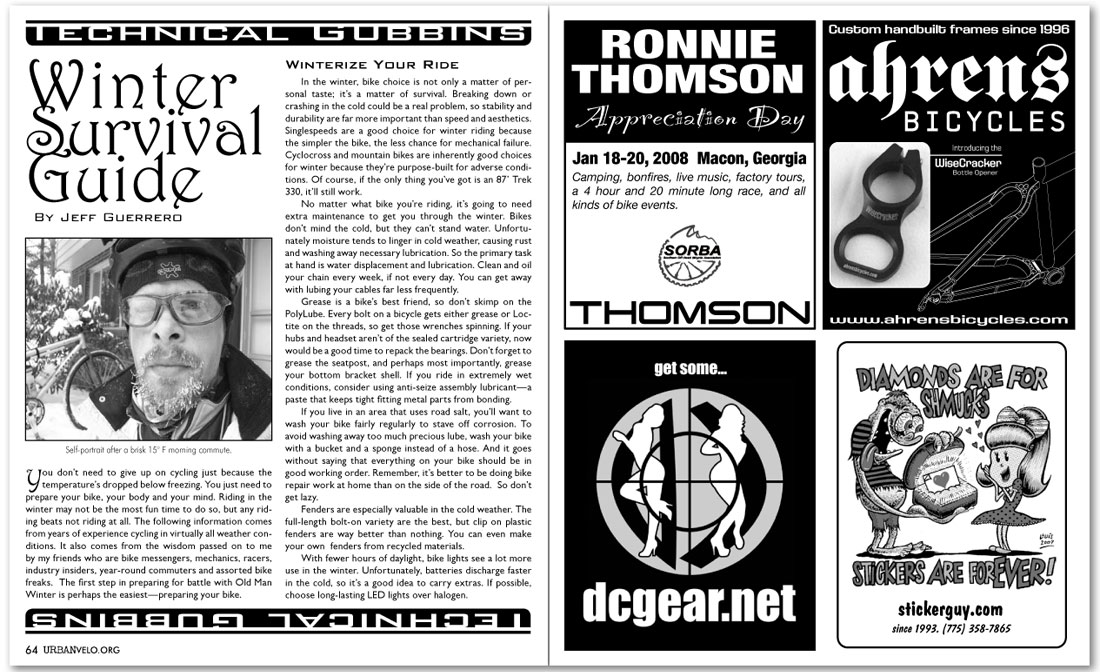

|
||||
Technical Gubbins - Winter Survival GuideBy Jeff GuerreroYou don’t need to give up on cycling just because the temperature’s dropped below freezing. You just need to prepare your bike, your body and your mind. Riding in the winter may not be the most fun time to do so, but any riding beats not riding at all. The following information comes from years of experience cycling in virtually all weather conditions. It also comes from the wisdom passed on to me by my friends who are bike messengers, mechanics, racers, industry insiders, year-round commuters and assorted bike freaks. The first step in preparing for battle with Old Man Winter is perhaps the easiest—preparing your bike. Winterize Your Ride In the winter, bike choice is not only a matter of personal taste; it’s a matter of survival. Breaking down or crashing in the cold could be a real problem, so stability and durability are far more important than speed and aesthetics. Singlespeeds are a good choice for winter riding because the simpler the bike, the less chance for mechanical failure. Cyclocross and mountain bikes are inherently good choices for winter because they’re purpose-built for adverse conditions. Of course, if the only thing you’ve got is an 87’ Trek 330, it’ll still work. No matter what bike you’re riding, it’s going to need extra maintenance to get you through the winter. Bikes don’t mind the cold, but they can’t stand water. Unfortunately moisture tends to linger in cold weather, causing rust and washing away necessary lubrication. So the primary task at hand is water displacement and lubrication. Clean and oil your chain every week, if not every day. You can get away with lubing your cables far less frequently. Grease is a bike’s best friend, so don’t skimp on the PolyLube. Every bolt on a bicycle gets either grease or Loctite on the threads, so get those wrenches spinning. If your hubs and headset aren’t of the sealed cartridge variety, now would be a good time to repack the bearings. Don’t forget to grease the seatpost, and perhaps most importantly, grease your bottom bracket shell. If you ride in extremely wet conditions, consider using anti-seize assembly lubricant—a paste that keeps tight fitting metal parts from bonding. If you live in an area that uses road salt, you’ll want to wash your bike fairly regularly to stave off corrosion. To avoid washing away too much precious lube, wash your bike with a bucket and a sponge instead of a hose. And it goes without saying that everything on your bike should be in good working order. Remember, it’s better to be doing bike repair work at home than on the side of the road. So don’t get lazy. Fenders are especially valuable in the cold weather. The full-length bolt-on variety are the best, but clip on plastic fenders are way better than nothing. You can even make your own fenders from recycled materials. With fewer hours of daylight, bike lights see a lot more use in the winter. Unfortunately, batteries discharge faster in the cold, so it’s a good idea to carry extras. If possible, choose long-lasting LED lights over halogen. |
|
|